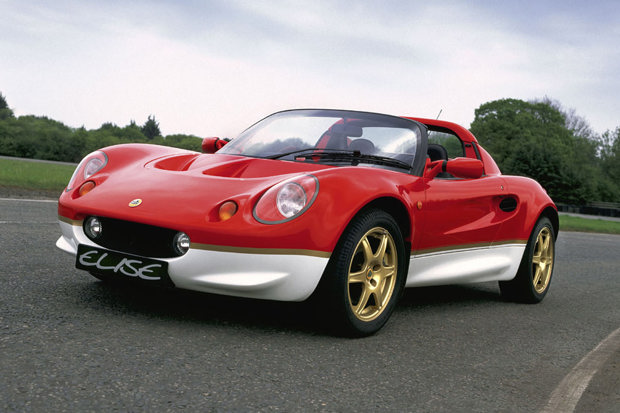Monday Motoring Classic: Lotus Elise

If ever a car summed up the can-do attitude of the British sports car industry, it’s the Lotus Elise. Just when Lotus was beginning to look like a busted flush and had to pull out of Formula One, along came the Lotus Elise to revive its fortunes.
Lotus was owned by Bugatti when the Lotus Elise was first conceived and codenamed the M111. In a nod to Bugatti’s then chairman Romano Artioli, the new lightweight car was named after his granddaughter.
Not long after the Lotus Elise was unveiled at the 1995 Frankfurt motor show. With an impossibly tempting starting price of £18,990, the Lotus Elise cost about the same as an average hot hatch, yet mustered 0-60mph in 5.8 seconds from its Rover-sourced 120hp 1.8-litre engine.
Such a humble engine gave the Lotus Elise very un-Lotus-like reliability and the Lotus Elise has been much less prone to the head gasket problems that plague the MGF. It also made the Lotus Elise much cheaper to build, which was just as well as the car was developed on a miniscule budget.

Originally, Lotus reckoned they would sell a total of 2700 Lotus Elises and thought it would be viewed very much as a car for die-hard enthusiasts and the burgeoning track day market.
Luckily, the marketing men were wrong and Lotus sold its first 1000 Elises by the middle of 1997, so production was revised up to 2500 cars per year. By the time the Series 1 Lotus Elise gave way to the S2 model in 2001, 10,619 Lotus Elises had been built and it was established as Lotus’ best ever seller.
Not bad for a car conceived and developed inside of two years. Even more impressive was the Lotus Elise shunned simple, cheap and old fashioned practices for its chassis.
Where a simple steel tube chassis, such as used by a Caterham Seven, would have been quick and easy to create, Lotus came up with a very clever, very light extruded aluminium platform that was epoxy bonded rather than welded or riveted together.

The same extruded aluminium technology was also used for the suspension uprights and the driver’s foot pedals were made from this too as a hint to what lay under the glassfibre bodywork. Aluminium was further used for the metal matrix brake discs to make them light and better dissipate heat build-up, though these discs can crack and were later replaced with steel discs.
All of this aluminium resulted in a kerb weight of 731kg, which was incredibly light compared to even a Mazda MX-5. Not only did the feather-like weight help with performance, it bestowed sensational handling on the Lotus Elise and sealed its fame among sports car fans and the motoring press alike.
Lotus capitalised on this with more powerful Lotus Elise models such as the 143hp 111S and Sport 160 with 158hp, plus the extreme 340R that was the ultimate expression of the stripped back Lotus Elise. The 340R came with a 177hp 1.8-litre engine to give 340hp per tonne, hence the name.
For many, though, the ultimate Lotus Elise is the fixed roof Lotus Exige that has the same engine as the limited edition 340R. It’s a thrilling drive, but perhaps best reserved for track use.
Due to their rarity, the Lotus Elise 340R and Lotus Exige models are correspondingly expensive, but a well cared for Lotus Elise S1 remains affordable and thrilling to drive. Indeed, the original Lotus Elise is the British sports car at its undiluted best. Find a classic Lotus for sale.
What is my Ford Escort MK2 RS2000 Custom worth?


